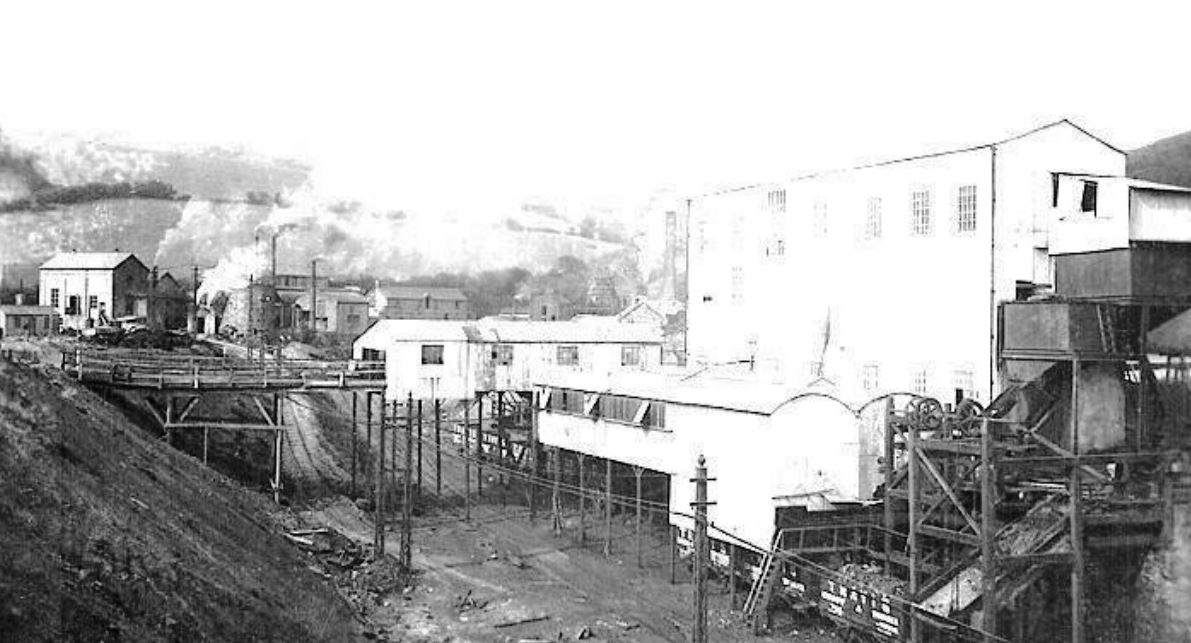Llanharan (99208488)
This mine was flanked by the Meiros Colliery Company’s mineral take to the east, west and north, with Werntarw Colliery to the west and Meiros Colliery to the east. To the south was Brynna Colliery. It was also called Llanbad. It was opened in 1889 and worked by the South Rhondda Colliery Company (1898) Limited whose sales agent was A. W. Travis of Exchange Buildings, Cardiff. It was located at the head of Cwm Llanbad with the downcast ventilation or north-eastern shaft being sunk 9 yards above the No.2 Rhondda seam and the upcast or south-western shaft about the same distance below that seam. The downcast ventilation pit was sunk to the No.3 Rhondda seam which it struck at a depth of 294 feet. It found the seam was 32 inches thick. Also worked as the No.2 Rhondda seam which had a thickness of 52 inches. There were also extensive workings in the Pentre seam which had a thickness of between 42 inches to 48 inches. Generally, this colliery produced type 401 to 701 High Volatile Coals for use in gas-making or coking blends.
This colliery was managed by William Williams in 1896 and employed 240 men underground and 33 men on the surface. In 1908 it employed 276 men and was still managed by Mr. Williams. In 1913 it was managed by Dan Evans and employed 400 men producing house and gas coals. It was still managed by D. Evans in 1916 when it employed 600 men. In 1918 it employed 385 men and was still managed by DR Lloyd. It was not listed in 1921 but employed 300 men in 1923 and was shown on a mineral lease map of 1927 when it employed 200 men.
It abandoned the No.2 Rhondda seam in September 1904, the New seam in April 1909, the No.3 Rhondda in November 1911, the Hafod seam in March 1916, while the South Rhondda, Llanbad Fach Nos.2, 3 Llanbad Fawr No.2, Tynycoed No.2 and Tynycoed Hafod abandoned the Hafod seam between July and December 1916. The South Rhondda Colliery Company (1898) Limited was a member of the Monmouthshire and South Wales Coal Owners Association.
It closed in 1929.
Some Statistics:
- 1896: Manpower: 273.
- 1899: Manpower: 313.
- 1900: Manpower: 296.
- 1901: Manpower: 347.
- 1902: Manpower: 373.
- 1903: Manpower: 322.
- 1905: Manpower: 282.
- 1907: Manpower: 260.
- 1908: Manpower: 276.
- 1909: Manpower: 276.
- 1910: Manpower: 301.
- 1911: Manpower: 246.
- 1912: Manpower: 284.
- 1913: Manpower: 400.
- 1915: Manpower: 600.
- 1916: Manpower: 600.
- 1918: Manpower: 385.
- 1920: Manpower: 600.
- 1922: Manpower: 450.
- 1923: Manpower: 236.
- 1924: Manpower: 147.
- 1925: Manpower: 300. Output: 50,000 tons.
- 1927: Manpower: 23
Information supplied by Ray Lawrence and used here with his permission.
Return to previous page

